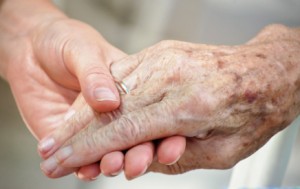6 ways to improve dealing with death in LTC
Here’s my latest article on McKnight’s Long-Term Care News:
6 ways to improve dealing with death in LTC
There are moments in life that engender important questions. When an individual is born, we ask, “Is it a boy or a girl?” When the person dies, we ask, “What happened?” In long-term care, we’re not around for the first question, but we often are for the second.
Though infrequently observed by those not involved with direct care, how someone dies is a very important part of the culture of the long-term care organization.
In “Remembering the Lost,” New Old Age blogger Paula Span reports on the typical experience of loss in LTC, where deaths are often barely acknowledged. She describes two alternative programs that offer a way to recognize individuals who have lived and died in LTC.
In “Better death notifications could improve CNA work experience, study suggests,” McKnight’s notes that how the deaths of residents are communicated to CNAs affects the way they feel about their work. The best way to find out, the study concludes, is to be told prior to beginning a work shift. The hardest way to learn of a death is to arrive at the resident’s room and find it emptied of belongings or filled with a new resident.
A front-line perspective
Like others performing direct care, I’ve had to cope with the loss of residents. I felt sucker-punched by the deaths that occurred early in my LTC career. My youth, inexperience, denial, and lack of training in issues around death made the demise of very ill or very old residents seem sudden and shocking.
I quickly got some training in thanatology (the study of death) and I’ve had many years of experience since then. I learned to protect my heart and love with a little cushion of distance around me.
Echoing the findings of the study referred to above, my worst experience by far was coming in to work to find the room empty of a beloved patient, the bed stripped and raised as high as possible after the mattress had been cleaned. By contrast, once an aide rushed to me the moment I got off the elevator to visit one of my patients, telling me she’d passed the night before. I thanked her profusely, hurried to the bathroom and cried.
My rituals around loss do still occasionally involve crying in the bathroom, but more often since I learned to protect my heart I look upward and say, “Rest in peace, John.” Or Mary. Or Viola. Sometimes I talk with other staff members who were close to the resident. Or I write about the person who died.
Creating better ways to address losses in LTC
My personal rituals were developed in the absence of formal, facility-sanctioned acknowledgement of the deaths of residents. As a shrink, I was aware of the need to get training and to recognize the personal impact of these losses.
I suspect that many new staff members don’t make it past the “sucker-punch” phase of losing residents. Instead, they quit, so that new staff members must be hired and trained. For ideas on how to reduce this likelihood, read Absenteeism and turnover in LTC? Death anxiety could be the cause.
Facilities can improve the experience of death and dying for the residents, staff and family by addressing various aspects of the process such as:
For the entire article, visit:
6 ways to improve dealing with death in LTC


